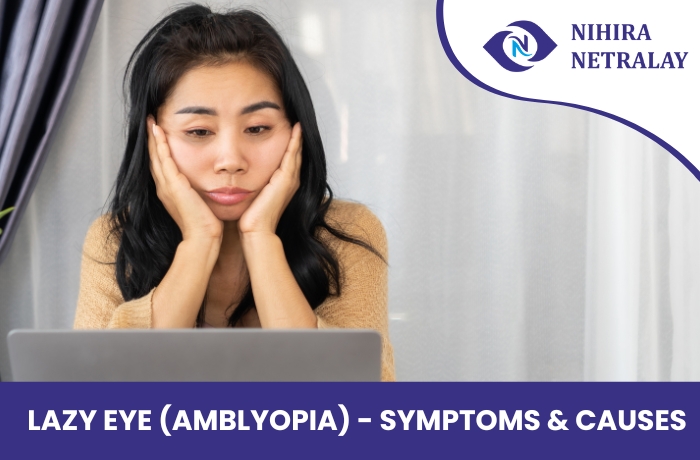Lazy eye, or amblyopia, is a condition most often associated with children. However, many adults may also experience the effects of this vision disorder without even realizing it. Understanding the causes of a lazy eye in adults can help in recognizing symptoms and seeking appropriate treatment. In this blog, we will explore what causes lazy eye in adults, its implications, and effective treatment options.
Understanding Amblyopia
Amblyopia is a visual development disorder that leads to reduced vision in one eye. It occurs when the brain and the affected eye do not work together effectively, causing the brain to favor the other eye. While amblyopia typically develops during childhood, it is crucial to note that adults can be affected if they had a weak eye during their formative years that went untreated.
Common Causes of Lazy Eye in Adults
-
Refractive Errors: Uncorrected refractive errors, such as nearsightedness, farsightedness, or astigmatism, are significant contributors to amblyopia. If one eye has substantially different vision than the other, the brain may ignore input from the weaker eye.
-
Strabismus: This condition, also known as crossed or misaligned eyes, often leads to amblyopia. When the eyes are misaligned, the brain may choose to ignore the visual input from one eye to avoid double vision, leading to a lazy eye.
-
Eye Injury or Disease: Any trauma or health condition affecting one eye—like cataracts or retinal detachment—can result in amblyopia. These conditions can diminish vision in one eye, prompting the brain to disregard it.
-
Genetics: A family history of amblyopia or eye conditions can increase the risk of developing a lazy eye in adulthood. Genetics can play a role in how the eyes develop and respond to various visual stimuli.
-
Neurological Conditions: Certain neurological disorders can impact eye coordination and visual impairment. Conditions such as stroke or tumors affecting the brain’s vision centers can lead to amblyopia.
-
Poor Visual Habits: Extended periods of close-up activities, like reading or using digital devices, without proper breaks can lead to eye strain and an imbalance in visual strength, potentially contributing to lazy eye symptoms in some individuals.
Symptoms of A Lazy Eye
Recognizing the symptoms of a lazy eye is essential for early intervention. Some common indicators include:
- Blurred or distorted vision in one eye
- Difficulty with depth perception
- Squinting or tilting the head to see better
- Eyes that do not appear to work together
Treatment Options for Adults with Lazy Eye
Addressing lazy eye in adults can be more challenging than in children, but various treatment options are available:
-
Eyeglasses or Contact Lenses: For individuals with uncorrected vision, proper lenses can help correct refractive errors and improve vision.
-
Vision Therapy: This includes a series of exercises designed to improve visual skills and coordination between both eyes, often conducted under the supervision of an eye care professional.
-
Patch Therapy: Sometimes used in combination with vision therapy, patching the stronger eye encourages the lazy eye to work harder, gradually improving its function.
-
Medication: In some cases, atropine eye drops may be used to blur vision in the stronger eye, prompting the weaker eye to become more active.
-
Surgery: In severe cases involving strabismus, surgical intervention may be necessary to realign the eyes.
Consult an Eye Specialist
Dr. Ankita Patil, an Eye Specialist in Nerul, Navi Mumbai, offers extensive expertise in diagnosing and treating conditions like lazy eye in adults. Don’t hesitate to reach out to her for expert advice and personalized treatment options to improve your visual health. Taking action today can pave the way for clearer vision tomorrow!
To Book An Appointment Contact us at this number – 87796 90795

